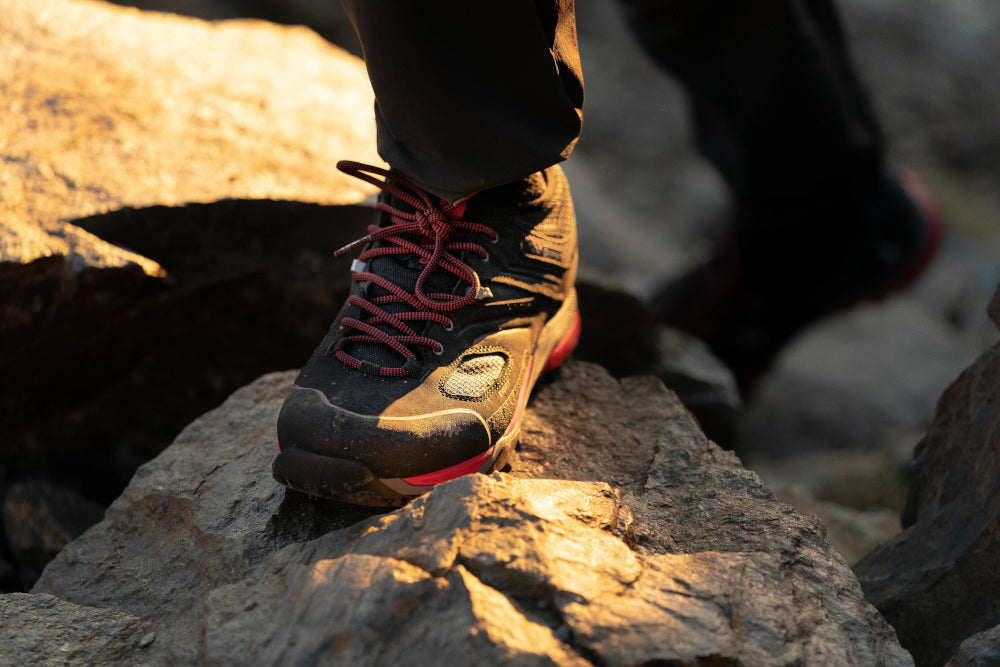
How to Choose Hiking Boot Insoles
Share
Do you want to enjoy more comfortable feet and reduce the likelihood of blisters?
Perhaps it's time to change your insoles!
Many people are unaware that good hiking insoles, like a pair of good socks or boots, will make your hiking experience a lot more comfortable.
Your choice of model will depend on whether you're after comfort, warmth or pain relief.
Below we offer advice to help you make the right choice!
Why Choose a Special Hiking or Trekking Insole?
Quite simply because your requirements change depending on your sporting activity and not all insoles offer the same benefits. If you enjoy running, you'll need an insole that provides better cushioning and propulsion. So, if you're a fan of hiking (which we assume you must be as you're reading this), you're going to need an insole that provides support, breathability and comfort.
A hiking or trekking insole is designed to provide a maximum level of comfort. It helps support the foot and eliminate any give that could cause it to move. Because if there's too much movement between the insole and your shoe, it can cause rubbing. Which is a recipe for blisters!
Another reason to choose special hiking soles is that they are designed to reduce fatigue (particularly during long, technical hikes or treks). The longer you walk and the more weight you carry on your back, the more your feet will collapse and elongate and the greater the pressure on your muscles and joints. In such circumstances, a good, technical, comfortable insole prevents your feet from tiring too quickly.
An Insulating Insole for Added Warmth
Are you setting off to conquer snow-capped peaks? You'll need some good boots and a pair of warm socks. For maximum comfort, you'll need good ground insulation. So remember to opt for an insulating insole. Some of them are made from a felt fabric which acts like a thermal barrier against the cold.
Good insulation (boots and insole) can keep your feet up to 5°C warmer because there's nothing more unpleasant than having cold feet during a mountain hike!
Reducing Impact and Vibrations
When hiking, your body tends to absorb impact and vibrations. Hiking boots offer extra cushioning that can be further enhanced by insoles.
There are some technical insoles designed specifically to improve shock absorption and attenuate vibration. Some insoles are designed using materials with cushioning and enveloping properties for enhanced flexibility, comfort, balance and improved foot position within the shoe. There are also insoles for improved plantar pressure distribution (provided by memory foam insoles). Some of them even have inserts made from technical materials that improve shock absorption at heel strike. They are ideal for long, multi-day hikes or treks, providing optimal comfort.
Please note: if you already have an insole, specifically designed for other requirements, you can also purchase heel cushions that you can place under your insole to reduce vibrations and improve comfort when walking. Important: heel cushions are not suitable for all shoes or boots. It's important to check that they don't cause discomfort or adversely affect the support provided by the shoe.

Reduce the Feeling of Fatigue
Is your excursion going to take a few days or a few weeks? Are you planning on exploring new trails during a week-long trek? If the answer is yes, you will need insoles that offer good support to reduce your fatigue.
"During a long excursion, your feet begin to flatten. Gradually, you change your way of walking. This change can place a strain on muscles and joints," explains Julien Ettel, Quechua's shoe and insoles product manager.
To compensate for this gradual collapse of the foot, some insoles provide arch or heel support for greater stability, encouraging a more upright posture.
Reducing the Likelihood of Blisters
Finally, the choice of insole may be influenced by the desire to avoid a problem experienced by numerous hikers: blisters. Blisters generally appear when our skin has been damaged by friction caused either by our shoes, socks or a foreign body. Humidity (caused by perspiration or external elements) may also play a role as it weakens our skin and therefore makes it more susceptible to this type of friction.
But we mustn't overlook the importance of insoles in helping to prevent the development of blisters. "If there's any give inside your boots, your foot is going to move. These repeated micro-movements can cause rubbing and over-heating. In extreme cases, you can get a second-degree burn, called a phlyctaena, more commonly known as a blister. An enveloping insole, designed to fit the shape of your foot will reduce this risk," explains Julien Ettel.
Think about the material your insole is made of.
If you use a smooth leather, city insole rather than a technical product, designed for hiking, you'll experience rubbing.
Our hiking insoles, just like our boots and socks, are designed specifically for this activity.
At Quechua, we made the decision to use open-cell foam to absorb humidity inside the boot.
In fact, when the foot comes into contact with moisture in cold conditions, it leads to a rapid drop in temperature and the risk of blisters.
Added Benefit
Bear in mind that an insole, designed specifically for your activity, will help "improve the fit" of your boot or shoe by offsetting the difference between the volume of the foot, which is unique to each individual, and the dimension of the shoe which is a standard size. It helps minimize rubbing and in-shoe movement.
One final point: it's important to remember to remove your insoles and dry them, particularly after a long hike or during itinerant hikes lasting several days.
Finally, all our insoles are designed for enhanced comfort and are not medical orthotics.
If you do experience persistent pain, we recommend you contact a podiatrist.















